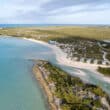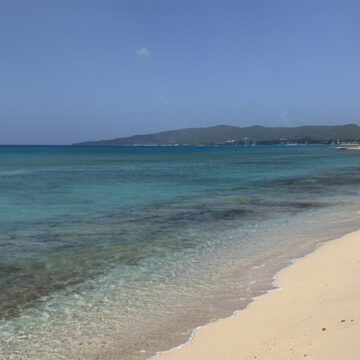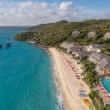CJI Conversation: Tom Hicks on Caribbean Landscape Architecture
It’s at the core of any hotel design, and something that’s even more essential in a destination like the Caribbean: landscape architecture.
And for years, Tom Hicks has been at the forefront of the industry, most recently with his work on the redesign of the iconic Rosewood Little Dix Bay in Virgin Gorda.
So how is landscape architecture changing amid the pandemic and new protocols for travel? How is landscape architecture evolving for new generations of travelers? And what are the keys to getting the right design?
To learn more, we caught up with Hicks in the latest CJI Conversation.
What are some projects you’ve worked on previously?
Having worked in the Caribbean over 30 years, we’ve been fortunate to develop long term relationships with amazing resort owners, operators, contractors and project management groups that have supported and trusted us with their projects. International Hospitality Enterprises (IHE) in Puerto Rico, for example, maintains their properties to very high standards and we’ve assisted them with all their properties which include the Condado Vanderbilt Hotel, La Concha Resort, Courtyard Isla Verde Beach Resort, El Convento, Doubletree by Hilton and Condado Palm hotels in San Juan. Other projects in Puerto Rico include Las Casitas 1 in Fajardo, Copamarina Resort in Guanica and the design/build restoration of the Caribe Hilton following Hurricane Maria, where we teamed up with Landscape Contractors & Designers (LCD).
Some resort projects on other Caribbean islands include the Auberge Malliouhana in Anguilla, Hilton Aruba Resort & Casino, Melia Resort in Nassau Bahamas, Half Moon in Rose Hall, Jamaica and Rosewood Little Dix Bay in Virgin Gorda.
How has the industry been affected by the pandemic?
In the long term the adjustments we consider now will make Caribbean tourism safer, more resilient and stronger. In the short term, the timing, speed and consequences of the virus have put a huge strain on an already suffering industry. When the pandemic hit, a lot of Caribbean resorts were still working through re-opening post Hurricanes Irma and Maria. Puerto Rico specifically was recovering from not only Hurricane Maria but also a series of earthquakes.
The shutdowns and closures have already impacted, and may continue to impact the entire industry from airlines to hotels, restaurants, taxi drivers and associated businesses. It seems the result will make us all re-think our product, our public and BOH spaces, our amenities and the services and safety we provide for our guests and employees.
You did the work on Rosewood Little Dix Bay; can you talk about that project?
Being a horticulturist as well as landscape architect, it was a tremendous opportunity to be involved with a project so horticulturally and environmentally focused.
Additionally, the history and reputation of the resort are unparalleled. Originally built by RockResorts and Laurence Rockefeller in the 1960’s Little Dix Bay, along with Caneel Bay in St. John, is one of the pioneering eco-resorts of the Caribbean, spearheading design techniques that 60 years later are still the gold standard for the eco-tourism market we see today. The low-rise architecture, regional Caribbean character, extensive naturalized areas and native plantings all set on a beautiful island with wonderful people, is special.
More specifically, although Hurricane Irma devastated most of the structures, 60 years of matured vegetation and overhead shade, this renovation provided an opportunity to re-think and modernize specific elements.
We were able to design new pedestrian circulation, improve irrigation and lighting efficiency, service access points, view corridors and plant palette while keeping the original integrity of the resort fully intact. To carry out the renovation, we teamed up with Minines Plants in Tortola, who did an excellent job implementing the project on a design/build basis. Additionally, the development teams of OBMI Architects, Gardiner Theobald Project Managers and the CTF ownership team were integral in the success of the project.
What are the keys to getting the design right on a project?
A preliminary site review with the client is critical. This is an opportunity to discuss and listen to them, understand their goals and the potential opportunities and constraints of the site and budget. It is also an opportunity to guide the client and see other potential opportunities that may exist. Second, design is an iterative process, each iteration refines and improves the design.
Finally, and perhaps most importantly, is a regular on-site presence and making minor adjustments during the implementation. One of our strengths is construction logistics and the majority of our work is the renovation of existing properties.
There are always unexpected conditions, vegetation or utilities that are not accounted for in the drawings. Also, we deal with living plants that may vary in size, availability and quality or existing materials on site where minor field adjustments are necessary to accommodate them.
I’ve always believed the difference between a B+ finished project and an A+ project is on-site presence and making field adjustments to really fine tune and improve the installation.
How do you envision each resort? How much does the physical plant impact your design?
Probably the first consideration is the market niche the resort occupies combined with the condition of the existing infrastructure. Having worked in the Caribbean for so long we understand the level and quality of infrastructure varies greatly from island to island and its critical we adjust the design to that reality. The physical plant and environmental conditions, combined with budget, are the parameters that guide the level of our interaction with a site.
Then the keys mentioned in the previous question come into play. Once we understand ownerships goals, our design solutions work to consider and build upon the existing physical plant.
Within the existing practical and environmental constraints, we try to creatively modify the site into an attractive and functional space or series of spaces. For example, if you are designing an exterior seating amenity in Aruba or Virgin Gorda where water is scarce and expensive and natural shade a premium, your vision will be tempered by that reality.
In this example, cool paving materials, drought-tolerant shade trees and understory plantings are called for. The long-term operating costs of ignoring that are too high.
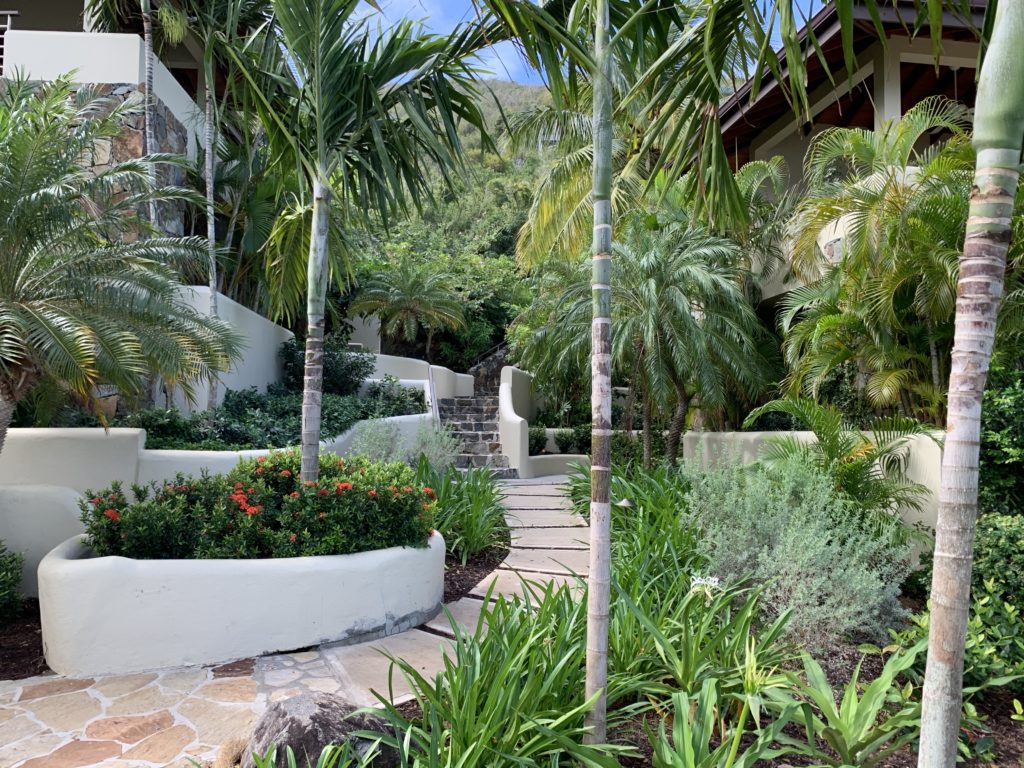
What makes landscape architecture unique in the Caribbean?
There are a few factors that make landscape architecture unique in the Caribbean, the first being the horticultural and ecological variety we have in the islands. Some islands are volcanic with tall mountains, lush vegetation and lots of rainfall while others are formed by coral uplift and are low, flat and arid with cactus and pure white sand beaches. Horticulture and construction implementation must adapt to each of these varying conditions.
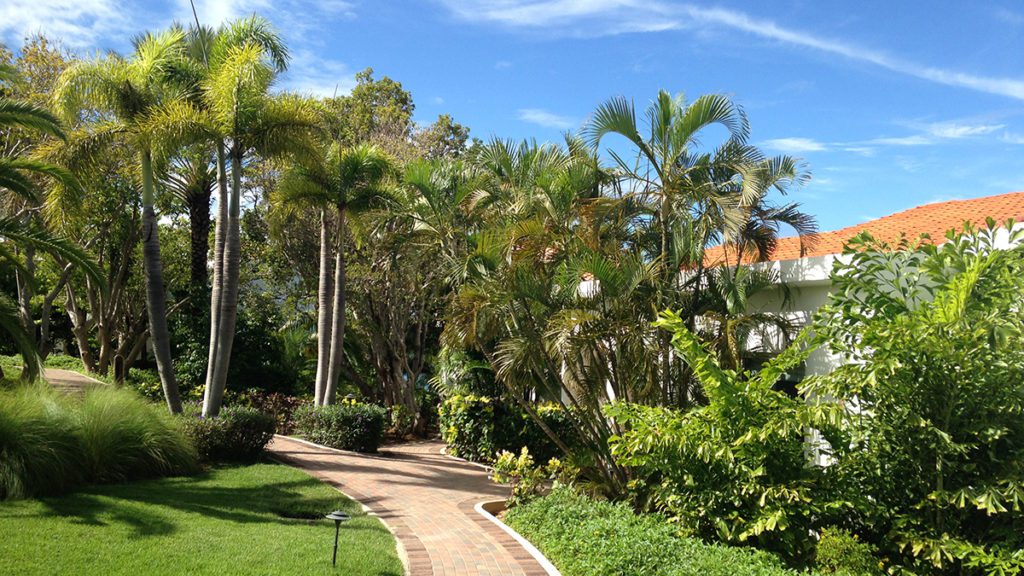
As a working tool for professionals I wrote a book titled Tropical Plant Resource that identifies most of the commonly used plant species and many aspects of landscape installation and maintenance in the Caribbean. The second is construction logistics and implementation. Most islands do not have a Home Depot and getting materials to the site can be complicated and have long lead times for delivery. Also, the amount and experience level of contractors can vary greatly from island to island. We have completed several projects where we assisted ownership self-perform an installation in-house because there were no available contractors large enough or with the experience to implement the project. This, for me, has been the challenge, and joy, of working in the Caribbean. Finally, people come to the Caribbean for the clear water, beaches and beautiful tropical foliage and fruits. Landscape, its gardens and exterior site amenities provide the biggest impact in a resort for the lowest dollar investment on a square foot basis.
What are the environmental considerations at play in each project? How has that changed as more developers look to “green” their properties?
In performing amenity or public space improvements, more efficient infrastructure and reduced maintenance costs are key. The biggest “green” considerations we see are related to energy & resource conservation, specifically water and electricity. This is especially meaningful when renovating older properties and their need to maximize operating efficiency. Resources have always been expensive and a concern in the Caribbean, especially on the dryer, less developed islands, but over the last several years it’s becoming more important on the larger wetter islands and the islands with more advanced utility services. Over the last several years the increased use of low voltage & solar lighting is universal. Water conservation is more prevalent every year as well: this includes more efficient irrigation spray heads and drip irrigation using only treated effluent water and roof water collections systems and reducing the amount of area irrigated. This trend will continue.
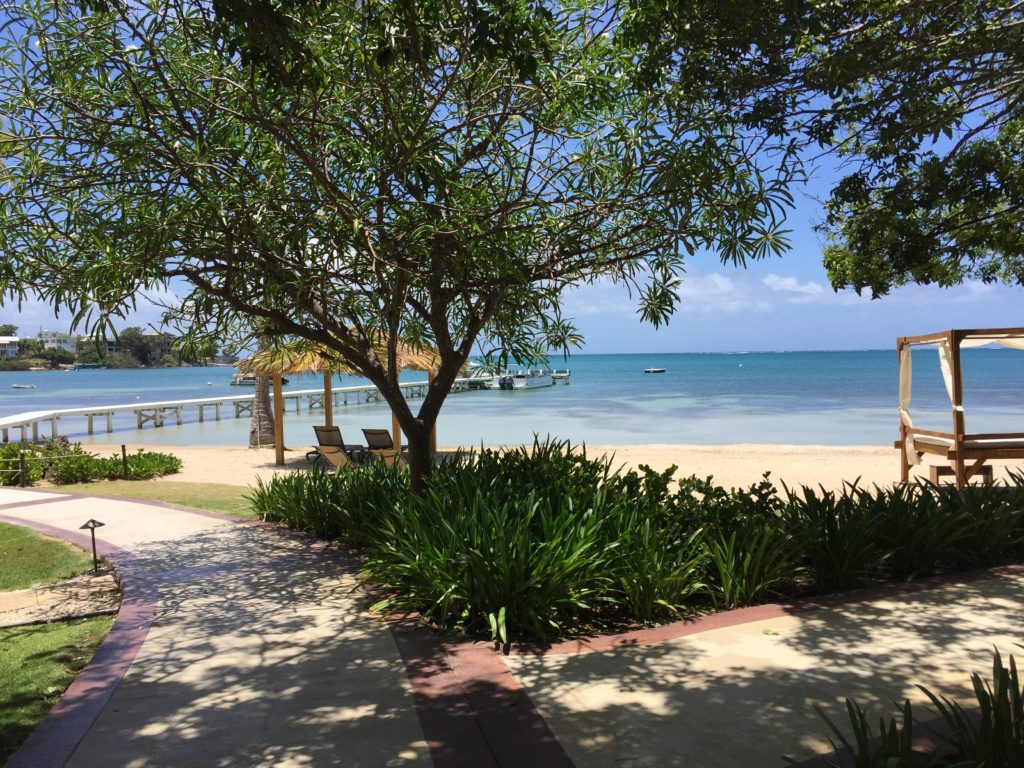
How has your industry been changing in recent years? What do developers and consumers want from their resort experiences?
I believe most developers and operators strive to create and maintain a quality physical plant and resort experience for their guests and employees while also being a responsible and positive member of the local community. Considering the environmental, political and social realities we all face today, this responsibility will become even more important and resorts will have to continue adapting to meet their clients demands. The landscape architecture and site design responses to the challenge will vary for each property and the solutions will be local, but this awareness needs to be present for all of them.
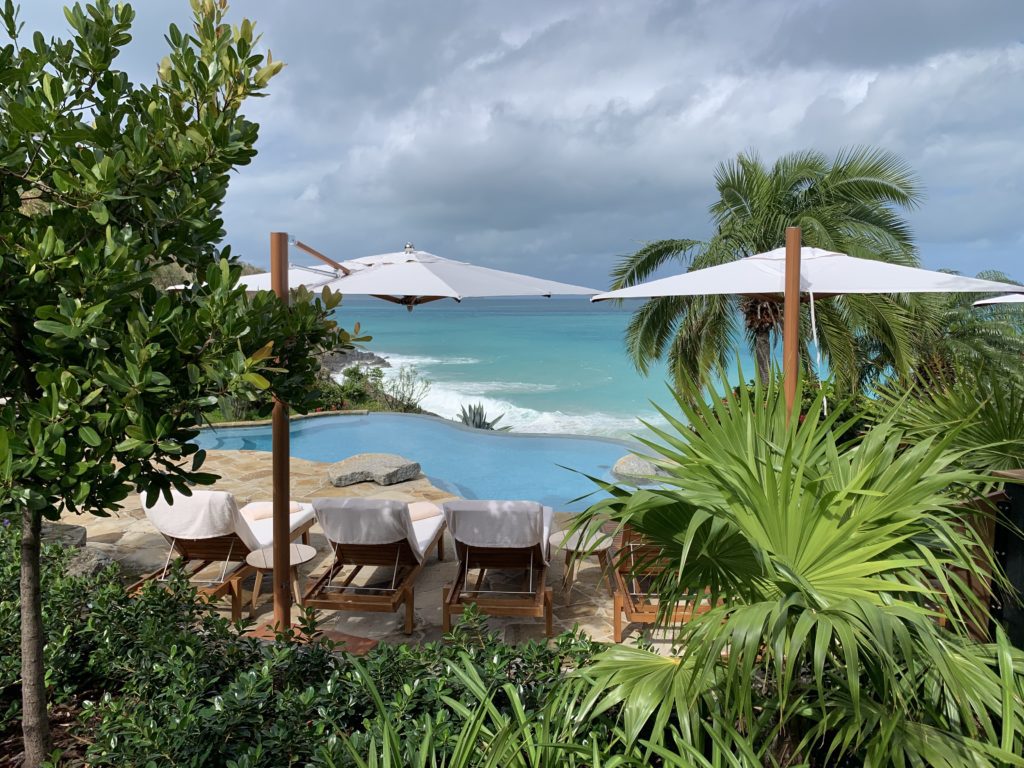
What’s your outlook for the future of hotel and landscape design?
Overall, the hotel industry is expert at adaptation and adjusting to new situations. They adapt quickly and are constantly evolving to the latest trends. Generally, though, something I do see is a slow trend away from the baby-boomer clientele toward the Gen X and Millennial generations. These groups seem to demand a more personalized and varied experience during their vacation. For example, historically most resorts had 3 restaurants, a 3 meal with buffet, gourmet dinner only and a beach/pool grill. Now, resorts have 6-8 small specialty restaurants, food trucks or pop-ups with ethnic foods from all over the world.
Moving forward, and considering the current COVID-19 pandemic, resort landscapes need to make similar adjustments.
Smaller, more intimate outdoor spaces allowing fewer people and more space between them, different experiential aspects to the landscape such as edible landscapes, kitchen gardens, unique outdoor game areas or smaller seating areas within the garden. Considering the current social unrest as well, a concerted effort to design more inclusive properties with public spaces that provide a closer connection to the local culture and local residents will be an important aspect of future designs.
For more, visit THDC Design.
